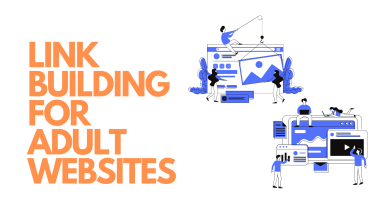
Online shopping is all the rage these days, with many people utilizing the convenience it offers in comparison to the traditional brick and mortar spaces, like malls and stores. However, there are times when consumers do not get what they want when they’re shopping online, which is where in-store shopping comes in. In this blog article, we look at some of the basics involved in online vs in-store shopping to help you meet consumer expectations no matter how you shop.
What Factors Should You Consider When Deciding To Buy Online or Offline?
There are pros and cons to both in-store and online shopping, so it’s important to understand what your consumer expects in each space.
When it comes to convenience, online shoppers clearly win. They can shop from the comfort of their own homes and often have more choices than they would at a brick-and-mortar store. However, there are also some disadvantages to online shopping. For one, you may not be able to try on or take home an item before you buy it, so you may have to trust the seller’s description. And if something goes wrong with your purchase – like the product doesn’t arrive as expected – you may not have many recourse options.
On the other hand, in-store shoppers have the advantage of physically touching and trying on items before making a purchase. Plus, they can go directly to a store if they’re looking for a specific item rather than hunting for it online. However, there are also disadvantages to shopping in person. For one, you may have to wait for a long time in line, and if there’s a sale going on, you might be limited in your choice of items.
Ultimately, it depends on your specific needs which space will serve you best.
How Can You Meet Your Consumer Expectations In Both Spaces?
When it comes to shopping, many consumers have strong feelings about where they want to do their shopping – in store or online. It can be tough to please everyone, but there are a few things you can do to meet consumer expectations in both spaces.
Instore vs Online Shopping:
When it comes to online shopping, make sure your website is easy to navigate. Include clear product descriptions, accurate pictures, and helpful videos that explain how the product works. Make sure your site is responsive so that it looks good on all devices.
When it comes to in-store shopping, be sure to display your products prominently and provide shoppers with helpful information such as product features and sizing details. Let them try on the clothes if possible and offer a range of payment options.
When shopping for products, consumers expect different things in buying online vs offline. One of the most important differences is that online shoppers are more likely to make a purchase without ever having seen or tried the product. This can create trust issues for brands and can lead to poorer customer satisfaction ratings.
On the other hand, in-store shoppers have the opportunity to try a product before making a purchase. Additionally, in-store shoppers are more likely to interact with salespeople and receive assistance when making a purchase. This can lead to better customer satisfaction ratings.
Overall, it is important for brands to understand how consumers expect to shop and provide a quality experience in both online and in-store spaces.
Customer Expectations in Buying Online Vs In Person
While some people may prefer the convenience of buying electronic products online, others may prefer the social interaction that comes with in-person shopping. Here are three tips for meeting consumer expectations in online vs offline shopping
- Be Transparent About Shipping Times: When you sell products online, be clear about the shipping time frames. Consumers need to know what to expect so they can plan their lives around your product availability. If you don’t provide accurate information, they may end up feeling frustrated or angry with you.
- Make It Easy For Customers To Return Items: When customers buy products online, it’s important that you make it easy for them to return them if they don’t like them. Many retailers offer a free return policy, so make sure you prominently display this information on your website. In addition, make sure your return policies are consistent across all channels – if a customer returns an item online and then buys the same product in person, they should be able to return it without issue.
- Make It Easy For Customers To Contact You: In addition to having clear return policies, be sure to have a contact form on your website so that customers have an easy way to reach out when they need assistance – or if you are a brick-and-mortar store, always include it in the back of the store.
- Update Your Online Presence: As time goes on, business owners tend to get more and more comfortable with their branding. But this is never more true than on the Internet – meaning there are certain things you should be doing as often or more frequently than usual, every day. For example, remember to make sure that your company logo is prominently displayed on your site, and update your social media pages if possible to ensure that consumers can easily find your brand online.
International Shopping
When it comes to international shopping, there are two main ways to go about it: Online vs Offline store. While both have their pros and cons, it can be difficult to meet consumer expectations in both spaces. Here are some tips for making the best of both international shopping sites
- Communicate Clearly and Concisely
It’s important to be clear and concise when communicating with your consumers online or in-store. This will help them understand what you’re selling and ensure they feel confident in making a purchase.
- Offer Dynamic Images and Videos
Make sure your images and videos are dynamic, so they look good on all devices. This will make it easier for consumers to see what you’re selling without having to download a file or take a detour.
- Use Social Media Platforms Effectively
Social media platforms like Facebook, Twitter, and Instagram can be effective tools for promoting your products abroad. Post useful information about your products, as well as photos and videos that show how they can be used. And this way you can increase international online shopping.
- Make Sure Your Website is Accurate and Functional
Your website should be accurate and functional so consumers can easily find what they’re looking for. List your products by category or brand name, along with any promotions and special offers.
Conclusion:
Online and in-store shopping are two very different experiences, and it can be tough to meet consumer expectations in both spaces. Whether you’re an online retailer trying to replicate the feel of a brick-and-mortar store or an individual looking for a specific product that’s not available in your local store, understanding how consumers interact with different types of retail environments can help you deliver a successful shopping experience.


